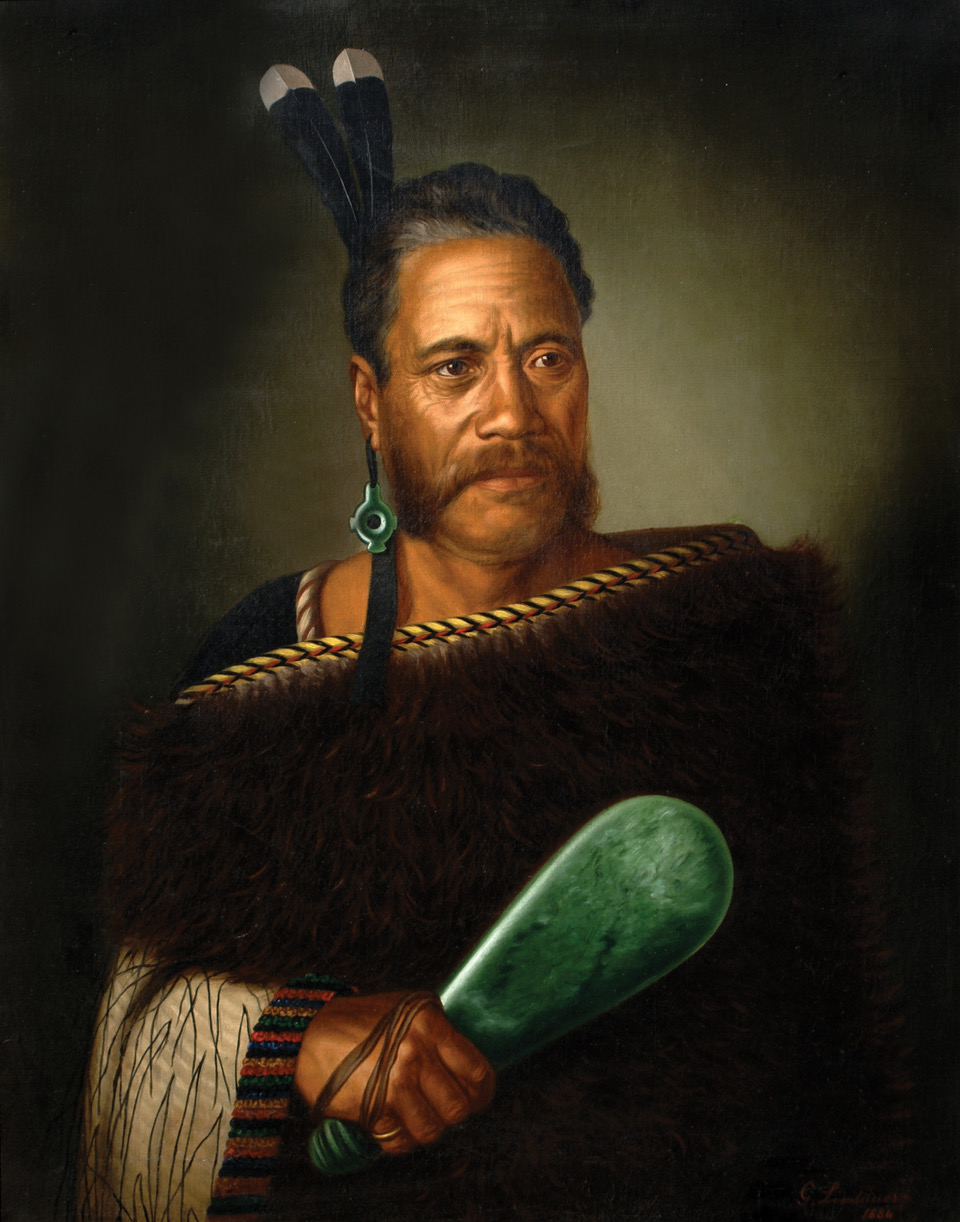
In April, two 133-year-old paintings of Māori tribal leaders Chief and Chieftainess Ngatai-Raure by Gottfried Lindauer were stolen from an Auckland gallery in a 4 am smash-and-grab raid.
Now, an online bitcoin auction for a stolen Lindauer painting has some wondering whether the dark web presents a new threat to the legitimate fine-art market. But the director of International Art Center, the Auckland gallery that the work was stolen from, has assured artnet News that the painting being advertised is a fake.
“It is obvious this is a hoax,” wrote International Art Center director Richard Thomson in an email to artnet News, adding that “no serious art collector” would be buying art on the dark web. (This is not to say, however, that nobody buys art on the dark web—in fact, new tools have been developed to spot fakes or stolen works sold in these shadowy parts of the internet.)
The auction for the portrait Chief Ngatai-Raure (1884), which has been running on the illicit White Shadow market for at least a month, was brought to wide attention by an article in Wired last week. The technology magazine reported the listing by seller “Diabolo” as reading, “Here you can bid on an [sic] TOP SECRET original Painting from Bohemian painter Gottfried Lindauer that was stolen in New Zealand, Auckland 2017.”
The auction is scheduled to end on December 28. There have been several bids already, the leading of which is 35.1129 bitcoin, which is equal to around $350,000 and exceeds the painting’s legitimate auction price. The “buy now” price is more than $800,000.
“The paintings were worth between NZ$350,000-450,000 ($250,000-$300,000) each but for the time being they are absolutely worthless—even in an underworld—until clear title can be given,” said Thomson. “Whoever is bidding should have purchased them from us in the first place and saved themselves a whole lot of money and trouble. But of course that’s all smoke and mirrors too—there is no such person. It’s absolute nonsense.”
Gottfried Lindauer, Chieftainess Ngatai-Raure. Photo courtesy International Art Center.
Thomson maintains the painting that is advertised online is a forgery. “The picture is photoshopped into an antique frame. It is incorrectly proportioned and there are subtle things that only I know,” he explained. “The seller is also offering a $10 million jet. But there are no remotely similar jets missing. Go figure!”
Alongside Charles Frederick Goldie, Lindauer is the best known painter of New Zealand’s indigenous tribes and his paintings can fetch a lot on the market. According to the artnet price database the Czech artist’s auction record is for Hinemoa (1899), which sold at Christie’s London in 2016 for £125,000 ($154,817).
The sale of Lindauer’s portraits of tribal ancestors can be controversial because of the indigenous belief that the paintings are living descendants. When a Lindauer exhibition came to Berlin in 2014, a blessing was carried out by the Haerewa—the Auckland Art Gallery’s Māori Advisory Group)—supported by nine members of the Ngati Ranana Māori London Club.
Thomson said the International Art Center had worked closely with ancestors and whanau (or extended family), who have “continually supported us in the identification of subjects by these artists.” If the stolen works are recovered by authorities, they’ll be owned by insurance companies, an unbefitting fate for the ancestors depicted.
As to what the Māori make of the theft, Thomson demurs. “All they tell me is that bad karma will be visiting the culprits soon—if it has not already.”